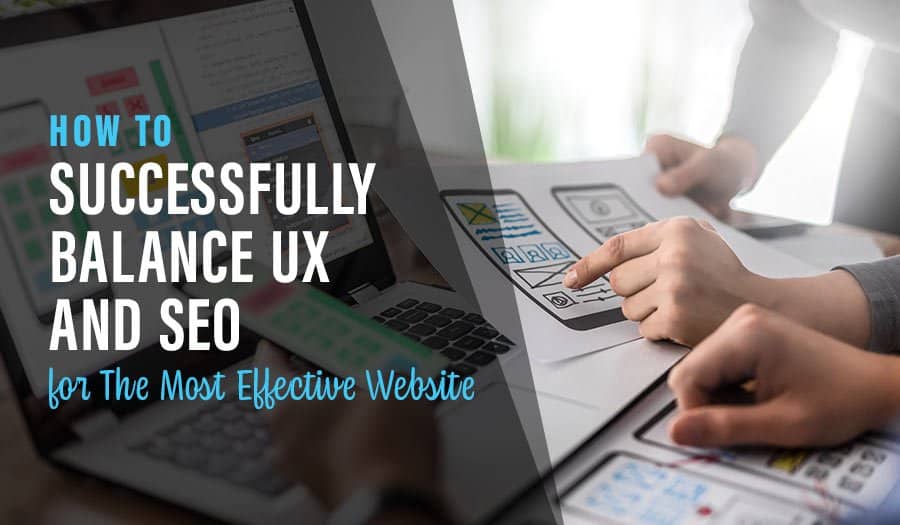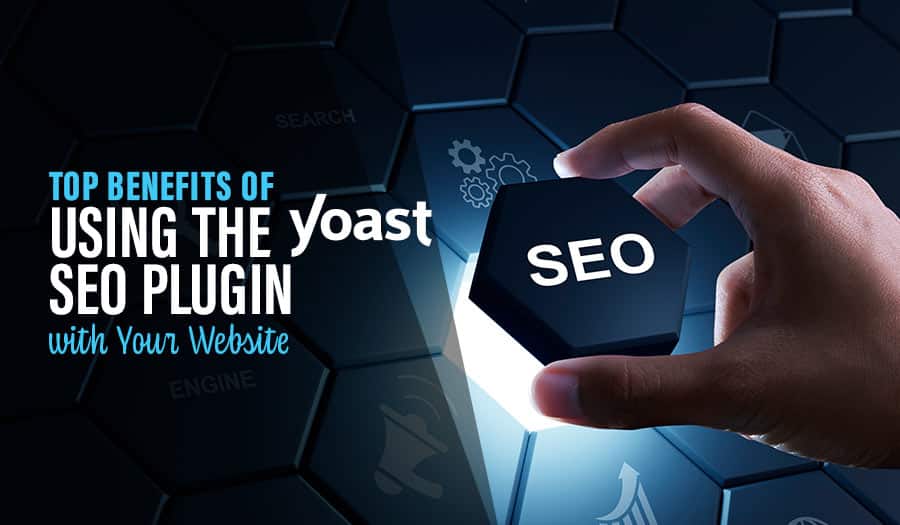When building your brand, paying attention to your website is best. A well-designed and optimised website will help you connect with the target audience and attract and encourage conversions. To achieve that, you should successfully balance UX and SEO. Generally, whatever’s good for UX also boosts your SEO and vice versa.
Understanding UX and SEO
UX vs. SEO: Two Sides of the Same Coin
As a business owner looking for a website to promote your business or a marketing manager at a company that wants to streamline its digital marketing strategy, balancing SEO and UX may seem like serving two masters. The battle between UX and SEO has raged since search engines gained prominence in the digital marketing world. Each champions itself as the top priority when it comes to web design.
However, that doesn’t have to be the case. You need to consider the best SEO practices and combine them with guidelines for positive user experiences. After all, everyone wants their website to be optimised, but the site also needs to be navigable to convert visitors to customers. Before you even think about balancing UX and SEO, know how each works so that the balance ends up being impactful.
What is SEO?
As the name suggests, SEO primarily entails optimising your content, making it easier for search engines to recognise and rank your website. It’s about fine-tuning the crucial aspects of your site so that search engines easily identify the website for relevant searches. SEO aims at attracting visitors to your website by ensuring the site appears among the first search engine results.
An easy way to ensure your site shows up atop search queries is by incorporating the right keywords into your content and following SEO best practices. SEO is essential if you’re looking to build traffic, mainly organic traffic. Branding is also indispensable because sites that appear among the first search engine results are deemed more credible.
With a solid SEO strategy for your website, it will be easy to rank above the competition and capture the target audience’s attention. You’ll be doing enough to make your business sustainable as you build your site’s organic traffic and attract more visitors.
How does SEO impact your website?
It helps search engines understand what your site is about, which then enables them to rank it for relevant keywords. SEO also provides people with the information they need about your content, making it easier for them to find what they’re looking for. Furthermore, when you use the right keyword in your content, search engines will prioritize displaying your web pages first in the SERPs. This will get your content seen by more people and increase the chance of them coming back to your site. Finally, SEO can help you build better relationships with customers as they see that your website is trustworthy and reliable since its rankin in the SERPs.
Quick Tips for optimising your website’s SEO
- Ensuring your content is relevant, up to date and well written
- Including keywords in page titles, headlines and throughout the body of text
- Making sure you have a good link structure with no broken links
- Having shareable content that users can easily access and share
- Ensuring your site is mobile friendly with an easy to navigate structure
- Implementing a content marketing strategy which involves creating and sharing valuable content often.
These are just a few of the many tactics you can use to improve your website’s SEO and ultimately increase its visibility in the SERPs. Of course, there is much more involved when it comes to improving your website
What is UX?
UX or user experience is all about the end user’s interaction with your business, its website, and its products and services. Optimising your content alone won’t inspire the target audience to interact with your website. UX design involves bringing different things together, including interaction design, information architecture, usability, and visual design.
Ultimately, UX design comes down to how your website looks and feels and how easy it is to interact with the site. UX focuses on simplifying things for your website’s human readers, so being mindful will help you stand out and keep visitors on the site. Good UX design ensures that your site is properly organised and categorised and easy to access both on desktop and mobile devices.
Excellent user experiences on PC and mobile gadgets and fast page speeds are imperative for SEO and UX. When ranking websites, Google often takes both into account, which is why you should get everything right. Critical UX considerations that also benefit SEO include site navigation, targeting audience personas, and enhancing site speed.
How does UX impact your website?
UX is an incredibly important piece of the puzzle when it comes to creating a website. It impacts every other element, from how quickly visitors find what they’re looking for, to whether or not they stay on your web page long enough to make a purchase or contact you. With proper UX design, your site can be more user-friendly and engaging, leading to increased user retention rates, higher engagement, and better conversions.
Top tips for UX web design
- Keep it simple: Simplicity is key when it comes to UX design, so make sure your website isn’t bogged down with too many bells and whistles. Keep navigation streamlined, use visuals sparingly, and maintain consistency across all pages.
- Focus on the user experience first: User experience should always be your top priority. Before adding any features, ask yourself if they’ll add value to the user experience or detract from it.
- Make sure your page loads quickly: Slow page loading times are a major turn-off for visitors, so ensure that your website runs fast and efficiently. Optimize images and compress files to improve loading times.
- Improve navigation: Intuitive navigation is essential for a good user experience. Use clear and consistent labels, menus, and pathways to ensure that visitors are able to find what they’re looking for quickly.
- Test your website: Before launching your website, make sure you test it extensively. Look for broken links, slow loading times, and any other usability issues. It’s important to make sure that you’re providing visitors with a smooth and enjoyable experience.
- Provide feedback: Make it easy for your visitors to provide feedback about their experiences with your website. This can help you identify areas of improvement and tweak the user interface accordingly.
How to Successfully Balance UX and SEO for The Most Effective Website
- Balancing UX and SEO in Web Design
- Focus on Your Content
- Improve Page Loading Times
- Be Keen on Site Navigation
- Present Your Content Creatively
- Leverage Your Blog
How to Successfully Balance UX and SEO for The Most Effective Website
1. Balancing UX and SEO in Web Design
SEO and UX go hand-in-hand and significantly impact your company’s reputation, customer experience, and profits. It’s critical to appeal to search engines while delivering an unmatched user experience, so here are the top five tips to successfully balance UX and SEO:
2. Focus on Your Content
Content is the bread and butter of digital marketing. During web design, it’s essential to focus on how much content you present to the target audience and how you present it. Site visitors are likely to get bored if it contains pages and pages of content. Keeping your website content brief lets visitors quickly find what they’re looking for.
On the flip side, if your website content is too short, it will be challenging for search engines to understand and list the site during searches. For this reason, ensure each page on your website has ample content, which should be presented in an interactive and lively manner. The content should be split into sensible chunks for navigation purposes and kept relevant so that users can quickly find the information they want.
3. Improve Page Loading Times
Loading speed is crucial to both UX and SEO. If your website loads slowly, then chances are it will have poor conversion rates. Less responsive sites tend to be a turn-off for the target audience. As a result, they rank poorly in search engine results. An essential aspect of improving page loading times is enabling compression while minimising redirects.
Longer server response time is the primary cause of slow-loading pages. To improve the user experience, ensure server response time doesn’t bog down your webpages’ performance. Fine-tuning all these aspects related to page loading times will help you maintain excellent UX while optimising your website for search engine ranking.
Tips for improving website page load times
- Use a content delivery network (CDN) to serve up static files from multiple locations.
- Minimise HTTP requests by combining images, CSS and JavaScript into fewer files.
- Optimize image sizes for faster loading times.
- Leverage browser caching so that visitors don’t have to reload content each time they visit your website.
- Optimize HTML and JavaScript for faster loading times.
- Reduce redirects to improve page loading speed.
- Take advantage of HTTP/2 to reduce file size without sacrificing performance or compression.
- Make use of a caching plugin to reduce the load time for repeat visitors.
- Enable gzip compression to reduce the size of files transferred over the network.
- Utilize a hosting solution that is designed for optimal page loading times, such as a cloud hosting platform.
4. Be Keen on Site Navigation
Navigation is a crucial aspect that makes SEO and UX dependent on each other. If your website is complex, navigating from one page to another will be difficult. The harder the navigation, the higher the bounce rates on your site. Indeed, this is detrimental to how search engines rank the website.
Most users prefer crisp websites that don’t have too many confusing options when finding the content they’re looking for. As such, you should minimise the complications in your site’s navigation while maintaining as few web pages as possible. Content clarity is also crucial in optimising your site to offer better UX and rank highly in search results.
Tips for easy-to-use website navigation
- Keeping the navigation menu as straightforward as possible.
- Creating a logical structure that users can easily follow.
- Use breadcrumbs to help visitors keep track of their navigation path.
- Make sure you have clear labels on your navigation menu so that users will know exactly where they are at all times.
5. Present Your Content Creatively
One of the biggest clashes between UX and SEO proponents concerns the amount of content that needs to be on a web page. Ideally, there should be enough content for search engines to understand what your web pages are all about. On the flip side, your content should be concise and clear enough to keep website visitors engaged without overwhelming them.
During web design, you should be creative about how and where you place your content. For instance, the first four to five sections on the homepage should relate to the site’s most essential pages. When visitors land on your homepage, they’re likely to use it as a gateway to other internal pages.
6. Leverage Your Blog
It’s a no-brainer that you need a blog to support your digital marketing campaign. An active blog is beneficial to both your UX and SEO efforts. From an SEO perspective, a blog allows you to consistently add new content to your site, something search engines value. Internal linking between blogs on your site and incorporating keywords that enhance search engine rankings in these blogs is crucial.
From a UX standpoint, blogs are visitor-friendly tools for organising information. Instead of lumping your content into tens of difficult pages to find or navigate, consider placing it in blogs. In this regard, you can conveniently organise your information by categorising blog posts and incorporating relevant tags into them. This way, it will be easy for website visitors to access the information they want.
What are the Potential Clashes Between SEO and UX?
Although SEO and UX are complementary aspects of website design, potential clashes between the two should be ironed out to guarantee your digital marketing campaign’s success. Some of the potential clashes include:
Page Consolidation vs. Segmentation
From a UX perspective, your webpage should create a singular experience for different audiences with overlapping search intents. However, for SEO purposes, you must create web pages that rank for relevant phrases and keywords. To prevent this clash, ensure page navigation when creating site content.
Crawler Readable Text vs. Keyword Usage
If UX were the most vital aspect of web design, web pages would be created for an exclusively visual experience. This can’t work from an SEO perspective because only webpages with keyword-focused text can rank. For this reason, search engines and searchers need to see pages/content relevant to their queries and not just visually- pleasing content.
Key Takeaways
UX and SEO always seem to clash, but that shouldn’t be the case. The two are joined at the hip, which is why you should find a way to successfully balance UX and SEO to create an effective website that helps you achieve your digital marketing goals.
For this reason, you should implement SEO-savvy messaging, mobile-friendly content layout and navigation, and a robust blog to satisfy both UX and SEO best practices. Ultimately, you’ll provide the ultimate experience for your users and search engines.
Suppose you’re embarking on a digital marketing campaign and want to partner with a web design agency that strikes a balance between Search Engine Optimisation and UX. In that case, you need the experts at Pixel Fish. Thanks to our conversion-based approach to web design, we create beautiful websites that take your business to the next level. Contact us to get started.
Take your business to the next level with a Pixel Fish Website.
Check out some of our latest Website Design projects.
Further Information
Pixel Fish Hosting, Support & Maintenance
Is your WordPress Hacked? Here are 5 Potential Reasons
Read More
10 Point Business Web Design Checklist for a Perfect Business Website
How to Create a Unique Selling Proposition (USP) to Grow Your Business
7 Hot Tips to Help you Design and Launch Your Website
Flying High: How to Promote your website after launch
What You Need to Know About Inbound Marketing in a Nutshell
Importance of Professional Business Web Design
Social media seniors: The older generation are embracing technology
Amazing E-commerce Website Photo Tips
5 Reasons Why Small Businesses Must Think Big
Local SEO checklist: 7 SEO Tips For Local Success
How to improve your Landing Page Design Conversion Rate
Business Web Design Tips: How to keep people on your website longer
Small Business SEO: 5 ways to Boost Sales through SEO
SEO Keyword Research
How to Create a Landing Page for Your Small Business
Website Design Form vs Function: Finding the Perfect Balance
What is Website UX and how it effects your Business Web Design SEO
How to Exceed clients Expectations through Superb Business Website Design
Top 10 Unbeatable WordPress Website UX Tips for your business
Top Reasons Why Your Website Speed Impacts Your Business
Why a Single Page Website Could Be the Perfect Launch Pad for Your Small Startup Business



